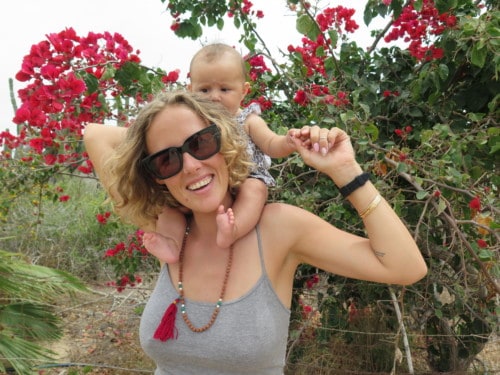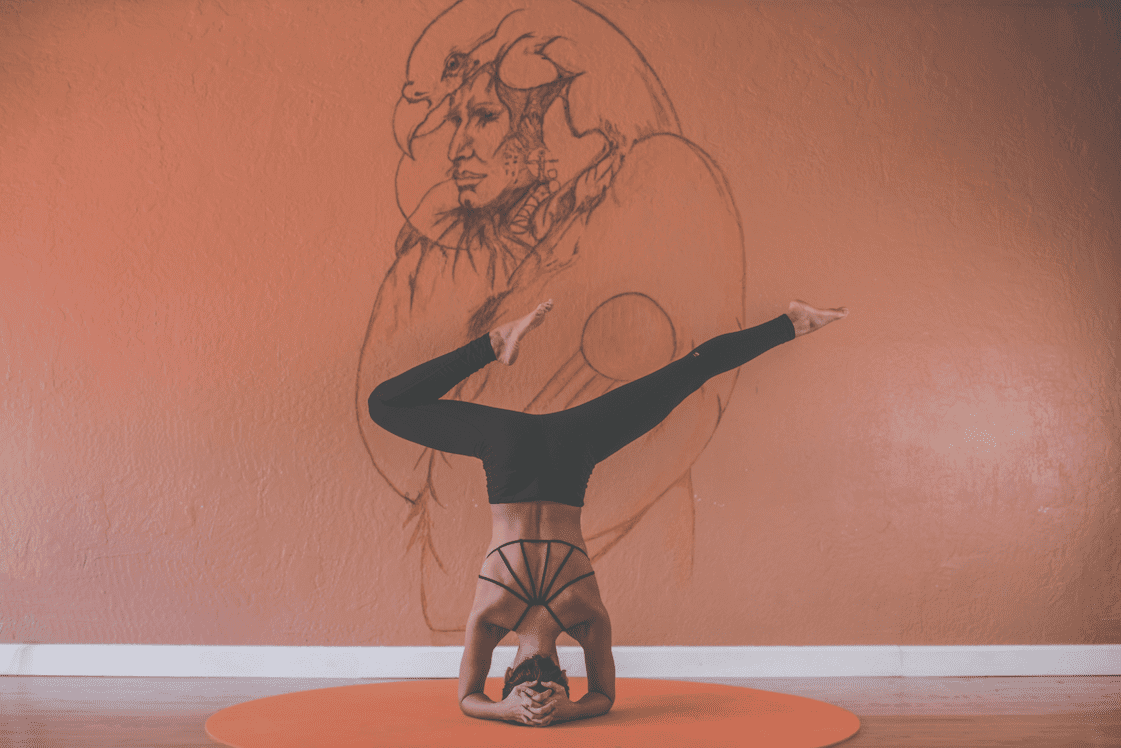There comes a time in every yogin’s life where the choice to take their practice up a notch presents itself: should I take the plunge and get certified to teach?
There are a lot of misconceptions about the 200-hour Yoga Teacher Training (YTT). One of the biggest I’ve seen is thinking it will make you more flexible or a better yogi (i.e., you will find some enlightenment on the mat, struggling towards a yoga butt). Another is that all people who get certified are teachers. I would venture to say that about 20% of those who are certified are actually any good at teaching. Some people just want to go deeper, and some people should never teach and even more, never will.
These days, you can spit and hit thirty yoga teachers. Getting certified is a matter of money and time, not ability, and the training reflects that exactly. The grand majority of the Yoga Alliance approved YTT’s are absolute rubbish and break down into mostly month-long asana yoga posture boot camps and nothing more. If that’s all you’re looking for, save your dough and take a thirty-day challenge at your local studio.
I got certified in India in 2012 with absolutely no interest in teaching yoga ever. In fact, I hated yoga and all the neo-hippie mumbo jumbo that went with it. I signed up because I wanted to vacation in India without drinking and I love a challenge and collecting awards and certifications.
What I learned in the month I was there changed my life forever and none of it had to do with sweating it out on the mat. My whole life changed once I learned yoga theory, the historical aspect of lineage, breath work (pranayam) and meditation. It took me almost six months to digest what I downloaded in a month in a shala in Goa, and after that I started teaching.
Turns out I’m actually a pretty badass yoga teacher, although not as great of a yogin. My practice could be better, but my gift of gab is really what makes me good at teaching. So teaching yoga and taking the certification are not even related; what’s important is that you choose the training that is right for you, not what’s going to make you the best teacher, because like all things in life, becoming a good yoga teacher takes practice and time.
Here’s how to choose the YTT that’s right for you:
1) Consider time and money. Hippies don’t like to go to this awful place of money-making decisions, but it’s necessary. If you are a single mom like me, and you can’t take a full month off to do YTT plus a few weeks to let yourself settle before returning to your life, then you can’t take off to Bali for a training boot camp.
They are also very expensive, costing somewhere around 5k – and for those of us with mortgages, children, school debt etc., 5k is insane. If you are someone without money or time, then the best things to do is find a good local studio and take a YTT that takes place on the weekends. Many studios have payment plans for these types of trainings and many people actually find that spreading out all the info helps them to digest it and incorporate it into their practice better.
Top Picks for Teacher Training in Toronto:
Downward Dog. They’re sort of the first in town (1999) and they are really tight in their teachings. They have top-notch guides who really take you through the full philosophy and adjustments. Plus there is a heavy focus on self-study. It’s Ashtanga based, which is neither bad nor good, but something to consider.
Octopus Garden. Pat, the boss lady, has decades of experience and knows how to create flow in classes in interesting ways. They also offer lots of mini courses like Restorative Yoga and Movement and other certifications once you complete your 200 hours.
Kula Annex. If you are into the Hatha-based teaching, then this is the best place to go. They also have tons of weekend workshops that are a blessing for taking your skills up a notch once you start teaching.
2) Figure out what you want to teach or deepen. If you are an asana junkie then you are probably already on the Ashtanga train. If that floats your boat, then why not get certified in it? If there is a studio you absolutely love, and that’s where you see yourself teaching, then get certified with them. Most studios in Toronto hire out of their trainings, so if 889 Yonge Street is where you are spending all your extra time and money, then do their training. One thing to watch for though is that some certifications prevent you from going just anywhere. If you get certified in Bikram, Moksha or Sivananda, then that is all you can teach – these are examples of studios that only hire their own and none of what you learn in any will work outside. So choose wisely.
Yoga Camp: Learning Abroad. I have a lot of beef with these fly-by-night training camps, especially in Central America (*cough* Costa Rica) and the Caribbean. The Yoga Alliance lays out the certification in a way where you are required to learn anatomy, pranayam, meditation, theory, as well as asana; but so many of them are just fitness getaways where students “work out” to death and learn nothing of the yogic teachings or lifestyle. Any training that serves meat, allows you out to drink or party on weekends or any of this tomfoolery, is a sham. The whole point of doing this full month immersion is to try something different, to experience the path, not to go to some sleep-away camp that has you turning yourself into a pretzel and parading the latest in Lulu Lemon around.
Top Picks for Teacher Training in Latin America:
Mystical Yoga Farm: Lake Atitlan – Guatemala. They run trainings in Peru as well but their hub is at the lake in Guatemala. If you are into shamanism, conducting ceremony or permaculture, than this is THE place to incorporate and learn about that in terms of YTT.
Yandara Yoga: Todo Santos (near Cabo) – Mexico. They also have trainings in Hawaii and Bali, but the main hub is in the desert in Mexico. The teachers are great, the set up is wonderful and they give you just enough space to spread your wings but keep you grounded in the teachings along the way. I just got my advanced napping certification with them in Yin, Restorative and Bhakti yoga and they are just incredible and doing it right.
If you have the time and money, I recommend going to Asia to learn. Bali, India, Thailand. Get out of the West, and go East. In order to understand a lineage that is thousands of years old, why not go immerse yourself in the culture of that linage? I chose India because it was the cheapest sleep-away YTT and it’s where yoga came from. Every single famous yoga teacher learned in India. So why not go to the source?
My top picks for Teacher Training in Asia:
Tribe: India, Thailand, Austria. Their teachers are incredible, no bullshit yogi’s. I took my 200-hour here with Mark Ansari at the helm (if you are an Ashtangi, you know him). It was strict yet open, and most importantly, they taught us to teach yoga, not just to do self study. When I see teachers with great practices who just can’t seem to communicate it in word or flow, I am often grateful that Tribe gave me such an incredible foundation to work with.
Radiantly Alive: Bali. Radiantly Alive has only been open since 2012 as a Vinyasa-based teaching space and studio, but it’s the quintessential neo-yogi experience. Located in Ubud, basically the yogi epicenter of the world, it’s a super fantastic excuse to hang out in Bali for a month to six weeks. Plus they often have famous international teachers around and you cannot go wrong with getting certified here.
A word to the wise about learning abroad: Do not come back to the western world right after. Do yourself a favour and settle for a couple weeks first. YTT’s have a tendency (the good ones at least) to bring up your shadow and insecurities so you can look at them: it’s a special opening in your spirit, body and soul, so have the courage to give yourself space to work through whatever comes up.
The last option in choosing a YTT is to follow a guru. If there is someone who really gets you and what you want to learn and deepen, then by all means, follow them, learn from them – steal all their moves. In India, you can go live the ashram life for a month and learn that way (I recommend the Sivananda ashram in Kerela for its sweetness in character and its largeness in size), but here in the west you can follow celebrities. John Friend from the Anusara lineage, Kino in Ashtanga, and Shiva Rae (all around badass) are good examples of yogins who run trainings all over the world.
No matter where you choose, make sure they are offering equal amounts of asana, pranayama and meditation along with theory and anatomy. Yoga is the union of breath and body and nothing more, but you can still spend a lifetime learning just that one principle.
Namaste.
Anna Von Frances is a travelling single mom and yogin. She likes yoga, rap music and jokes. She has been studying and teaching yoga for only five years and has dedicated her practices to foundation, simplicity and cutting the crap. You can follow her adventures with her daughter Luna on her YouTube Channel or read about yoga and other mysteries worth solving on www.fullpoweryoga.com.





 Follow Us On Instagram
Follow Us On Instagram
